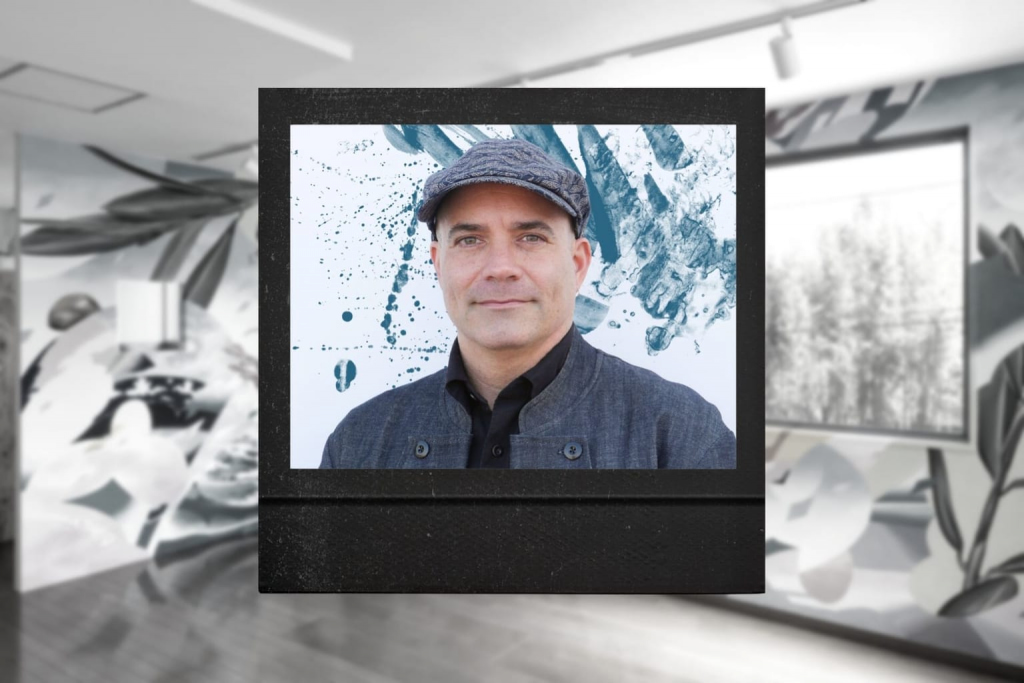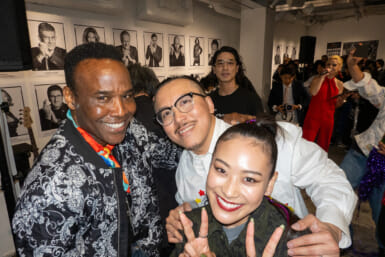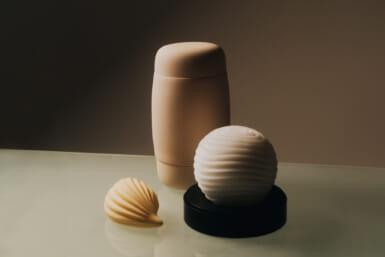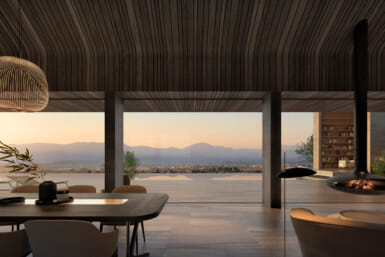It’s your typical Tokyo Friday night with a diverse crew who have gathered for an intimate barbecue on a rooftop. We’re all slightly inebriated from the laughter, the grilled steaks, and the seemingly endless supply of red wine. Our host, Daniel Harris Rosen adjourns our troupe to a minutes-away by-foot location. There is an unassuming building of Setagaya-ku, lies the proverbial rabbit hole. In true Mad Hatter style, he ushers us through it and into the new TokyoDex office, an art-filled wonderland.
Rosen is a stalwart of the Japanese art scene. His company, TokyoDex, works to bridge and create purposeful relationships between art and society. Through mixed mediums such as wall art, office artwork, workshops and more, TokyoDex’s offerings are an inspired complement to any multi-sensory experience.
1. It’s been a while since TW last spoke with you. Our last interview goes back to 2015. What have you been up to these days?
Back then we were doing a lot of art-based events like This&That Cafe at SuperDeluxe, which was really fun. But it was actually around this period that we got our first large office installation with CBRE, a project that was named ‘Tokyo’s Office of the Future.’ Bringing art to CBRE really put us on the map in terms of creating artwork for offices. From there, we started receiving projects on a larger and larger scale and have since worked with some big companies and their spaces such as EY Japan and Mitsubishi UFJ Capital. One of our biggest projects happened in 2019 where we did several art installations for a multinational IT company based in Shibuya.
2. You’ve spent over two decades of your life in Japan. How has this country shaped you as an artist and as a person?
I’ve been living in Japan for about 25 years. I was born and raised in Philadelphia but only really lived there up until I was 18. So even though that’s where I’m from, I haven’t spent much time there as an adult. In many respects, Japan feels much more like home to me. Everything from the aesthetics, the way we communicate to the values and the expectations, I resonate with it all so much.
3. Is there anything from your hometown in Philadelphia that you wish existed in Japan?
There is a wonderful art scene in Philadelphia and it’s something that has always been part of the fabric there. I still remember going back to Philly in the late 90s and doing some clay work at a place called the Clay Studio. It was a great place to make art. For all of America’s shortcomings, I feel like support for the arts has always been more prevalent there compared with Japan, with the NPO galleries and art and maker spaces.
With that said, I’m seeing more of these initiatives coming up in Tokyo, Makers’ Base in Meguro is a great example. There seems to be a transformation as of late, with a sudden interest in art through events, galleries and even as entertainment, such as Teamlab. I hope it’s not just a passing trend, but these weren’t here five to ten years ago.
4. Who are some of your favorite Japanese creatives you’d like to shout out to?
View this post on Instagram
Too many to name. But I do want to give a shout-out about a project we did recently with the duo WHOLE9. We were able to work with them on a project for the German Embassy in Tokyo to commemorate 160 years of German-Japanese relations and the work is stunning. It’s a set of murals depicting portraits of ’pioneers’ who have contributed to German-Japanese understanding throughout history. The canvas for this art is basically an entire 80-meter wall surrounding the embassy, you’ll be able to check it out up until the end of this year. With WHOLE9, we’ve known each other for a long time and I think they’re an incredibly talented duo. It’s been a privilege to see them grow as artists.
I’m also a big fan of Manami Sasaki’s work. She creates these incredibly exquisite pieces of art, on toast. I love how fun and quirky it is and the fact that she just eats it afterward. The ephemeral quality of her art is also reminiscent of the rippling water patterns in the sand of zen gardens, made only to be raked away.
In terms of music, Kodo the taiko drumming troupe had a massive influence on my life. In my 20s I was a writer and happened to publish an article about them in the Japan Times. From there I was invited to work at their annual music festival Earth Celebration doing English press response among other things. They were such pioneers of their craft by bringing Taiko as a traditional instrument into the performance space. I’d always considered them such masters of their expression on stage, but when I started to work with them behind the scenes, I saw both talent and the incredible amount of effort they put into it. It made me realize that I could also work towards >creating my own expression – that maybe I could be an artist too.
5. What about Japan inspires you creatively?
What I love about Tokyo is that it’s complete chaos and also completely civil at the same time. When you go walking in Shibuya, you might see someone dressed like a robot, Godzilla, or in cosplay and there’s no aggression at all. It’s all very civilized yet there is a crazy energy that you can feel just beneath the surface. On a Sunday afternoon in Yoyogi-koen, you’ll come across people playing taiko, people performing Okinawa dance and all kinds of random ‘clubs’ just quietly doing their thing side by side. There’s a sense of dedication to their craft that also that I admire.
I recently went to Kyoto and it was a wonderful experience. Covid has been terrible, and I do feel bad for those living in Kyoto who have relied on tourism over the years to make a living. But right now, Kyoto is completely empty and you can feel the magic of the city again. I was walking down Gion at 11 pm at night and I was the only person there; it felt like I was on a movie set. Kyoto has always had an eclectic mix of temples, old expressions and classic storefronts and it’s great to see that the essence of what makes Kyoto a great place has not been lost.
6. Where does the name TokyoDex come from?
When I was attending Tama Art University as a graduate student, I was part of this group doing art-based videos that eventually got us some small commercial projects. From there birthed this idea about being able to introduce artists to a wider community, a kind of conduit between businesses and artists. At the time I thought what I wanted to do was bring Japanese artists to the world and wanted something about Japan in the name of the company. I liked having “Tokyo” in the name because it’s instantly recognizable. And I also really liked the word ‘dexterous’ to show that we can do anything. I was stuck on ‘Dexterous in Tokyo’ for a while until a friend told me that it was terrible and that it should be ‘TokyoDex’, which instantly clicked.
7. The new TokyoDex office is an incredible space. What was the idea or the concept behind all of the art and even having artist displays right in the space itself?
Our original office was the downstairs area of my home until we outgrew it. I knew we needed a space of our own where we could invite people back to and bring clients, but it had to be close as I didn’t want to get on a train in the morning or to have it in some huge glass tower of a building. After speaking with my real-estate agent she told me about a place that was a literal 3-minute walk from where I lived. I couldn’t believe it and never even realized that building existed in my neighborhood up until that point. The place was pretty beat up and honestly not great but I saw potential in it. Before making any decisions though, I called in Ayako, a core member of my team, because it’s important to me to have others involved in the decision-making process. I asked her “Should we rent this?” and she said, “I can see this happening” which sold it for me.
‘Art in unexpected places’ was actually our old tagline and I wanted a space people could come to and instantly see what we do. We made sure that the people we were renting it from were onboard with letting us do whatever we want to the interior. We spent three months renovating it, calling in our friends who are architects and interior designers to help do things like rebuilding some of the walls and installing track lighting. We were fortunate to have a lot of artists who were excited to help us had artists coming in and out, printing out samples and getting to work with creating.
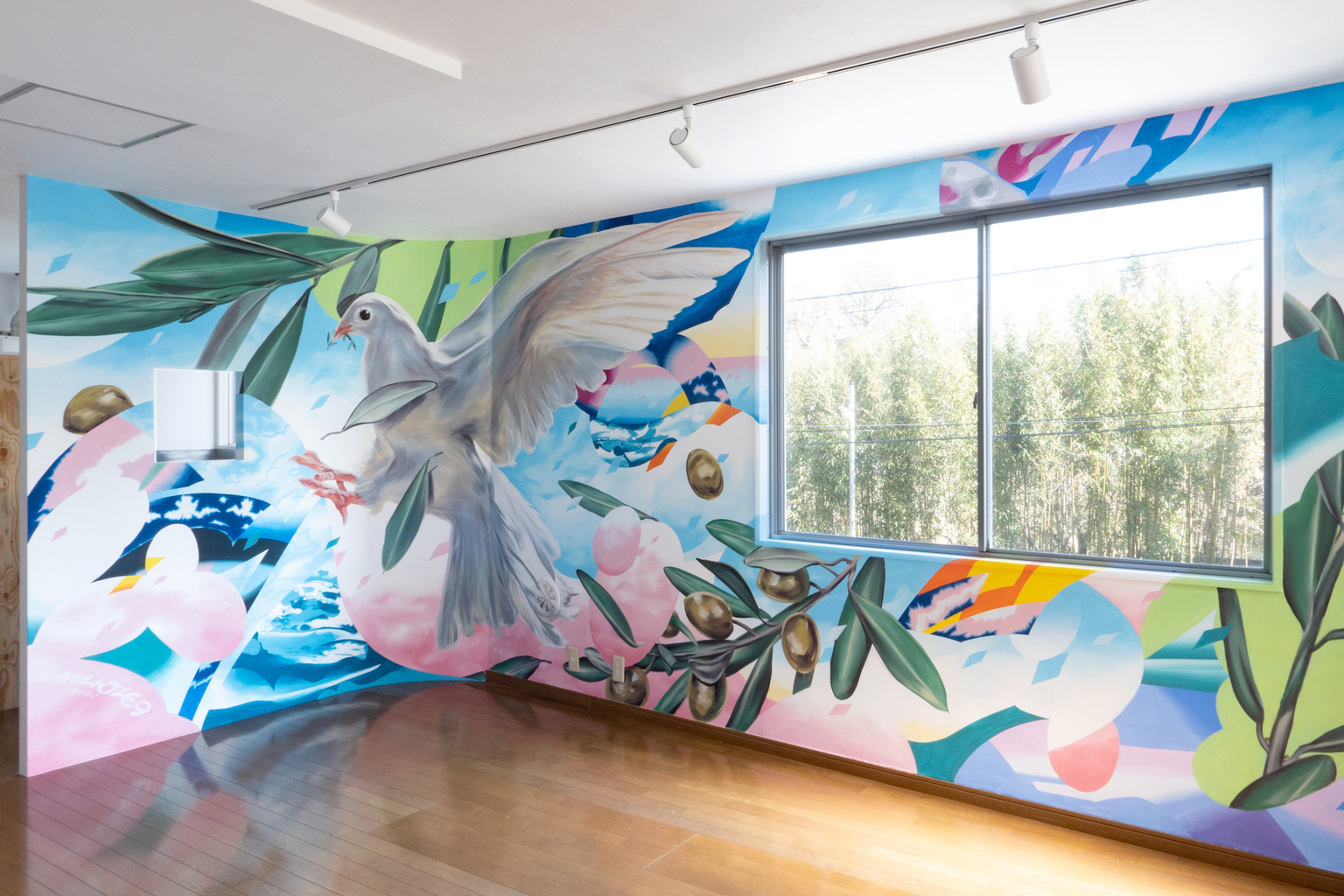
Living Room mural by Whole9
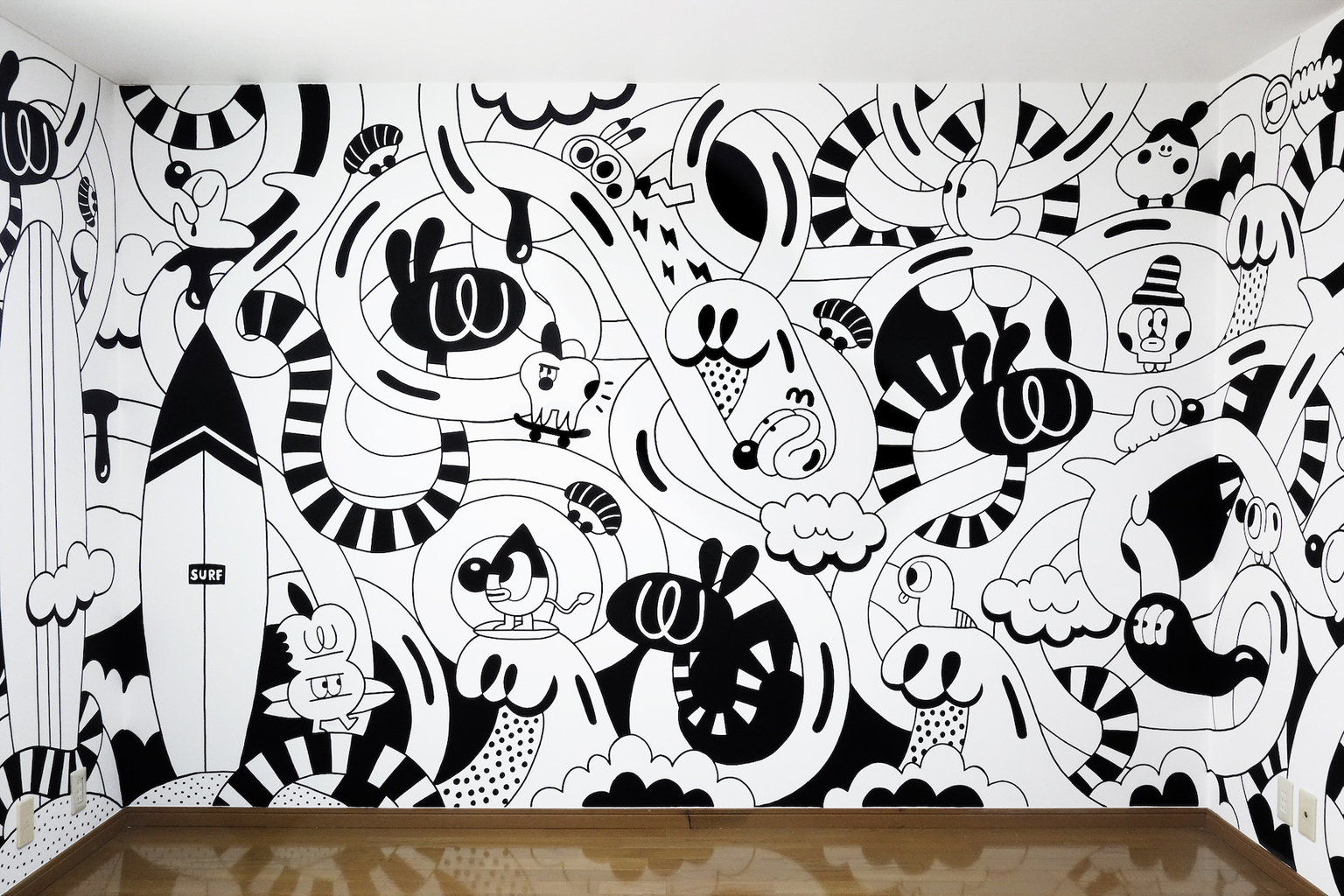
Co-Working Space 4-wall installation by Yeka Haski
It’s great to have that ‘wow’ when people enter now because that’s exactly what we want people to feel – a very plain space that has been completely transformed by art. From murals to print to 3D installations, it might be a bit of a sensory overload for some businesses, but it suits us really well.
8. How did Covid-19 affect your industry, your business and how have you had to pivot during the pandemic?
2020 was a rough year for us because everything halted in terms of construction and interior work. We had some projects cancel and some postponed for 6-8 months. Everything literally came to a standstill because we didn’t know how bad Japan was going to get in terms of the number of cases. The positive side of it was that we were forced to rest and reset after a whirlwind 2019. So it was actually good for us to stop and think about what we really want to do, whether it’s more office artwork, more community-based work or something else.
Like all other businesses, we’ve had to start diversifying our offerings, but they should still be on mission, which is leveraging artist’s talents and providing opportunities to them. We’ve started looking for our way into other fields involving technology, such as digital art installations, things that only artists can do.
9. What’s next for TokyoDex?
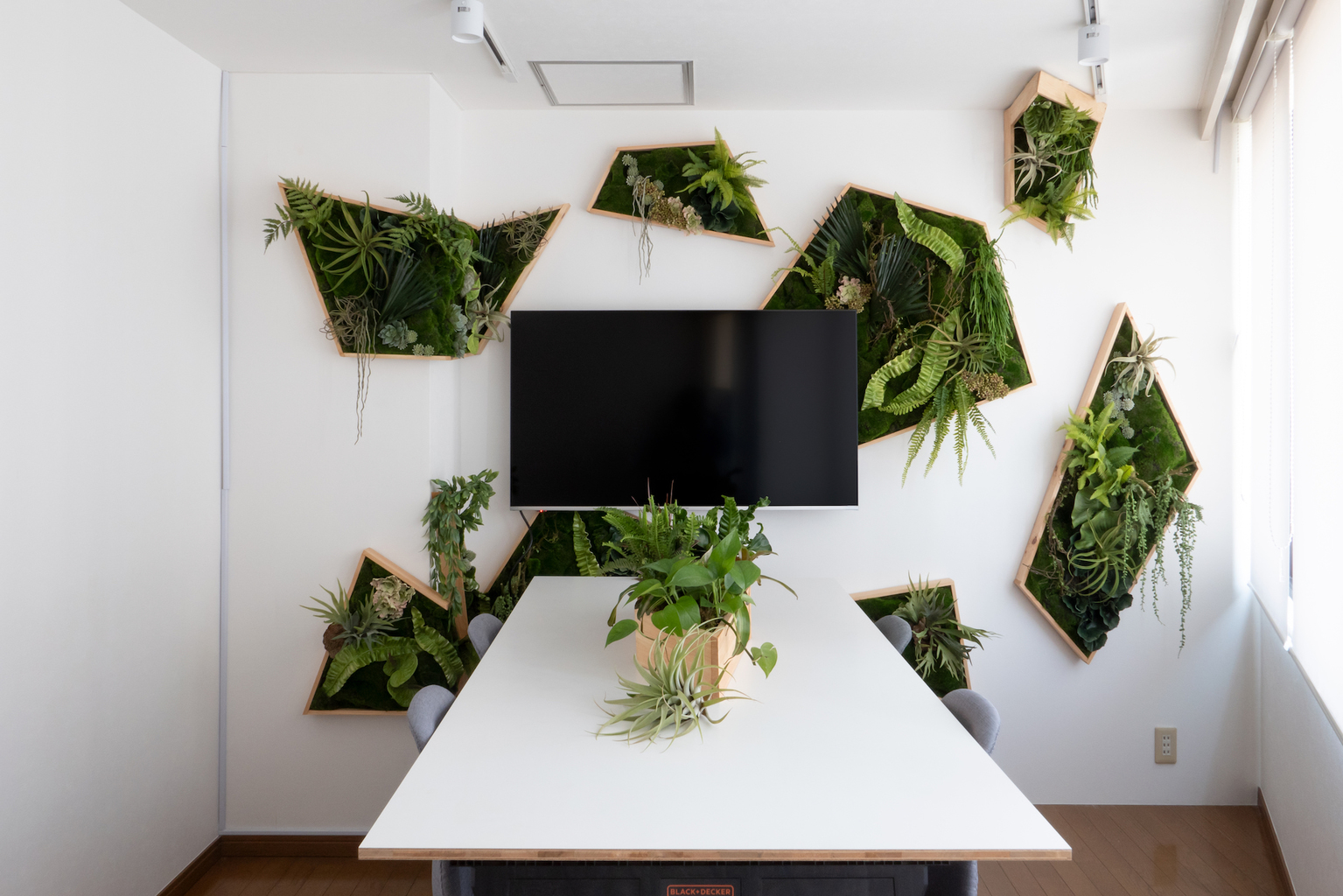
Meeting Room wall installation by flower-artist unit dodo
We’re really excited to open our space back up again since we weren’t able to even use it much in the last year due to covid. There’s a lot of talk about what offices in the new world are going to be like. Perhaps it will be more of a hybrid remote situation where some people will work from home, some will work from cafes and others will come into the office. I think the concept of an office will change, moving from a place where we ‘have to be’ to grind, to a place we choose to come to, to be inspired. Spaces will become even more special, and I think offices will become a great beacon for that.
Once travel is possible, I’d like to go back to the original idea of sharing Japanese talents with the world. We’ve had some really great responses from people overseas who didn’t know we existed but have been impressed with our work. So I’d love to be involved in some projects in other countries.
2022 also marks TokyoDex’s 10th anniversary. I’m planning to get t-shirts that say ‘Dextrous in Tokyo’ down the sleeves, just to remember what a ridiculous name that was.
10. For those who are aspiring to break into the creative scene in Japan right now, what kind of advice can you give them?
To put it simply, if you survive, you win. Working in the creative space is something that you have to really want because at any given point you will be met with easier alternatives to make a living. It’s rare for anyone to make it from the beginning, you’ll be pounding the pavement for years. It’s also important to understand the business side of things.
Community is important but never more so than in the work we do. At TokyoDex we are a small team of six and what we do is curate, direct and activate artists in our community. What we do is very social so it’s important to be out there and to have people, to reach out and to also accept help. For artists doing art on their own, it can feel like solitude so make sure you stay connected with your community. When you’re passionate and you’re expressing it to others, they’ll be inspired and get excited too.
See what TokyoDex is up to here.

